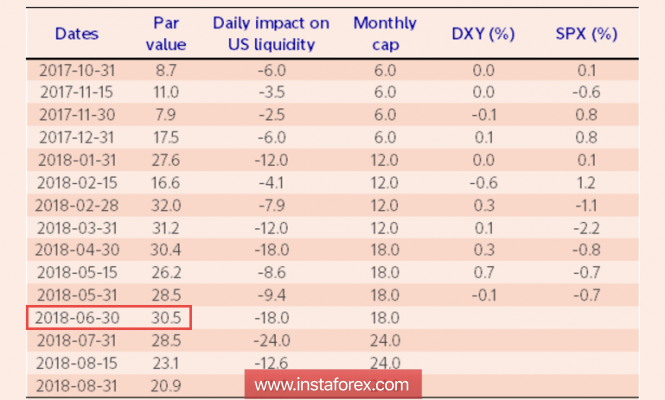
At the opening of the week, the US dollar looks neutral in general, but a number of markers indicate that this situation will not last long and the dollar will begin a new wave of strengthening.
Response to the results of the meeting of OPEC +. In recent weeks, the information space has been filled with a diverse insider, which boiled down to two points - OPEC + is considering the possibility of increasing production by 600 thousand barrels. per day, but a number of countries are against even such a small increase. So unexpected was the decision to raise production at once by 1 million barrels. per day. The reason, it turned out, was that India and China had rather rigidly expressed a demand to raise production and stabilize prices, threatening that they would increase purchases from the United States.
This decision should have triggered a fall in quotations, but the opposite happened: oil prices stopped falling. Apparently, such a reaction means that the entire additional volume will be bought out without delay and will not lead to an increase in inventories, which means that the world economy as a whole is growing.
The CFTC report showed a decrease in interest in gold. The long speculative position fell to a two-year low, which indicates a lack of fears about a slowdown in the global economy.
In general, the report showed a total dominance of the dollar, last week only the Canadian dollar and partly the franc managed to improve its performance, in all other currencies, including the yen, there was a redistribution of contracts in favor of the dollar, which indicates that large speculators see its near future optimistic.
Reducing the balance of the Fed. June 30, the Fed will remove from the balance 30.5 billion, of which 12.5 billion will be reinvested, and 18 billion will be liquidated. During the previous large write-off on April 30, the S & P 500 index lost 0.8%, and the dollar index rose, it is likely that this week the result will be similar.

Devaluation of the yuan. The hopes for the resumption of the talks between the US and China are melting like smoke, since the American side, in fact, has no choice but to continue playing along with its main trading partners, and China, respectively, there is a loss of confidence with a simultaneous increase in determination to defend their rights.
China can not respond symmetrically, since the commodity balance between countries has a big advantage in its favor, so it seeks other opportunities to defend its position. One of them is the devaluation of the yuan, which, as of June 25, reached the level of 6.54, which is a half-year minimum.
Problems in the euro area. June 28-29, the EU summit will take place, at which a number of important issues will be discussed. Attempts will continue to find a consensus on immigration issues and the formation of a unified budget, failure will provoke the growth of bond spreads within the eurozone, which will negatively affect the euro.
Trump on Friday voiced another threat to the EU, saying that he intends to increase the duty on cars by 20%, if the EU, in turn, does not agree to all the demands of the US and will not remove the counterstrike duties.
The European Commission, in turn, said that the US-EU trade balance is generally considered to be wrong, it should include a service sector, in which the US has a noticeable surplus, if we also take into account mutual investments, the balance for the US becomes surplus of $ 12 billion euro per year, which means that Trump's requirements should be canceled.
Thus, in general, the situation contributes to the growth in demand for the dollar. The macroeconomic calendar is unlikely to make serious adjustments, on Wednesday you need to pay attention to the dynamics of orders for durable goods, the final data on US GDP for the 1st quarter on Thursday plus May data on consumer spending on Friday.
The currency pair EUR / USD in the coming days could fall to 1.1460, wagering the growth in demand for the dollar, the pound may fall to 1.3050, slightly better than the yen's outlook as a defensive asset.